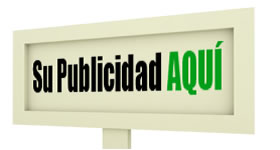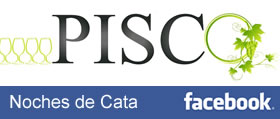Pisco Gatherings "Picasso de Juerga"
We would like to thank Mr. Carlos Barriga for sending us this article about Mujica Gallo’s recollection of a cheerful reunion with Pablo Picasso.
The Flamenco party had begun during broad daylight, early, under the pretext of a lunch under the warm Nice sun, like the gold colored Guadalquivir River passing through the middle of the Seville Fair. It was only that there, on the Costa Azul, no one
the pretext of a lunch under the warm Nice sun, like the gold colored Guadalquivir River passing through the middle of the Seville Fair. It was only that there, on the Costa Azul, no one
smelled the perfume of oranges, nor did they enjoy the flowerpots filled with geraniums, nor the patios filled with white jasmine, nor did they see the bull and the light of the arena.
But there on the sunny coast of France, the figure of Picasso is alive, the eternal lad that makes everything Spanish and young again. There he is, smiling as he follows the gypsy rhythms of the cañas, the ay-yay-yayes and the clapping. The flamenco
ambiance transports Nice to Andalucia. We could perceive from the beautiful French coast the enchantment of the Santa Cruz barrio and the grace of La Giralda.
The fact is that now, there, in front of Picasso, Antonio Gades is dancing, that this, which is already something, isn’t everything. While “La Polaca” a Spanish woman from Madrid without a drop of “cale” blood swirls her dotted train with passion and gypsy grace, creating a trance, Rafael Alberti drops his andalusian compliments and majestically strums “mar y tierra” in front of the couple.
Then Luis Miguel “Dominguín” stands up as if he were in the plaza and claps. In the oles there is a nostalgia for the arena which held the bullfight in othertimes.
Picasso has recently been operated on. He can’t taste the sherry nor the wine nor the Malaga. He isn’t even looking nor does he need to. Picasso is witty and cheerful like a young man who has just started to live. I hand him a bottle of Pisco which he smell appreciatively.
Everyone drinks directly from the bottle, except for him. His alert, smiling look centers on the brand “Picasso” of this bottle of Pisco which contains the most Peruvian of all liquors, the healthiest and the one most internationally reknown.
The painter then discovers the happy coincidence of the names and I told him that the success of the brand is due to the popularity of his name.
Under his brown hat, slightly askew, his expressive face becomes truly youthful. A gray coat over a green jersey, the checkered pants and the sporty shoes, the same color as the hat, help, without a doubt, make Picasso seem more jovial, make his happy image
more graceful, without a trace of affectation. Picasso is pure simplicity.
The bottles of sherry, of Malaga and red wine--I think the red wine is from Cataluña—disappear with shocking ease. There are signs of fatigue on the faces. The party ends when the light of the sun disappears over the horizon. Picasso says good
bye. The endless lunch seemed to reach its end, and here I have unexpectedly revived it.
But the party starts anew with the warm atmosphere and the aroma of the Peruvian Pisco. Luis Miguel and Picasso synchronize their hand-clapping with Antonio Gades and La Polaca’s dancing and Rafael Alberti’s humming.
The last bottle of Pisco is passed on from hand to hand. Pisco isn’t bitter, nor is it sweet, but it slides down the throat smoothly. Picasso is especially interested in the destination of the Pisco Picasso. He measures the contents and caresses the bottle: he makes it his own.
I now associate this gypsy party to those unforgettable “Traditions of Don Ricardo Palma,” so praised by Unamuno. Palma, with his Lima-ease-of-expression, claims that food flavoured with a mix of Cataluña red wine, sherry and Malaga, accompanied by
good Pisco, “the troublesome” Peruvian firewater, necessitates the immediacy of dance; something that we in Peru call “jarana” and in Spain they call “juerga,” And there we were, in Nice, applying the recipe of the great Peruvian writer.
But in fact now not only the day had become night, but the night was becoming morning. We watch the moon shine while Picasso, in light of the question about the state of his health after such a lively gathering, dramatically unbuttons those black and white checkered pants in order to show us his scar. Picasso then shows the same viril and arrogant stance of a matador showing his livid scars.
I ask him then if he hadn’t at one time in his childhood, dreamed of becoming a bullfigthter. The answer was clear enough: “I have not thought of anything else,” he told me “except being a painter.” “But since you were a child,” I add. And with a sort of melancholy he continues to talk, gazing at me, “I am surely the only child in the world that did not ride a bicycle in order to have fun; I was always absorbed by the urgency of my brushes. It was the need to pain, which was so vital for me,” he said, “like breathing and eating,” he added, complaining that Jacqueline, due to medical recommendations, would not let him touch nor grab a pencil.
While Nice still swarned with people on their terraces and Picasso now rested in his bed after the lengthy lunch and its night, the friends, Luis Miguel among them, started running around frantically, looking for the empty bottle with Picasso’s name on it which he had urged to rescue: “That will be for me”, he said “an unforgettable reminder of this day, and I will always enjoy seeing my name on the bottle.”
Manuel Mujica Gallo, Madrid 1969
Pisco bilingual magazine
The Flamenco party had begun during broad daylight, early, under
 the pretext of a lunch under the warm Nice sun, like the gold colored Guadalquivir River passing through the middle of the Seville Fair. It was only that there, on the Costa Azul, no one
the pretext of a lunch under the warm Nice sun, like the gold colored Guadalquivir River passing through the middle of the Seville Fair. It was only that there, on the Costa Azul, no one smelled the perfume of oranges, nor did they enjoy the flowerpots filled with geraniums, nor the patios filled with white jasmine, nor did they see the bull and the light of the arena.
But there on the sunny coast of France, the figure of Picasso is alive, the eternal lad that makes everything Spanish and young again. There he is, smiling as he follows the gypsy rhythms of the cañas, the ay-yay-yayes and the clapping. The flamenco
ambiance transports Nice to Andalucia. We could perceive from the beautiful French coast the enchantment of the Santa Cruz barrio and the grace of La Giralda.
The fact is that now, there, in front of Picasso, Antonio Gades is dancing, that this, which is already something, isn’t everything. While “La Polaca” a Spanish woman from Madrid without a drop of “cale” blood swirls her dotted train with passion and gypsy grace, creating a trance, Rafael Alberti drops his andalusian compliments and majestically strums “mar y tierra” in front of the couple.
Then Luis Miguel “Dominguín” stands up as if he were in the plaza and claps. In the oles there is a nostalgia for the arena which held the bullfight in othertimes.
Picasso has recently been operated on. He can’t taste the sherry nor the wine nor the Malaga. He isn’t even looking nor does he need to. Picasso is witty and cheerful like a young man who has just started to live. I hand him a bottle of Pisco which he smell appreciatively.
Everyone drinks directly from the bottle, except for him. His alert, smiling look centers on the brand “Picasso” of this bottle of Pisco which contains the most Peruvian of all liquors, the healthiest and the one most internationally reknown.
The painter then discovers the happy coincidence of the names and I told him that the success of the brand is due to the popularity of his name.
Under his brown hat, slightly askew, his expressive face becomes truly youthful. A gray coat over a green jersey, the checkered pants and the sporty shoes, the same color as the hat, help, without a doubt, make Picasso seem more jovial, make his happy image
more graceful, without a trace of affectation. Picasso is pure simplicity.
The bottles of sherry, of Malaga and red wine--I think the red wine is from Cataluña—disappear with shocking ease. There are signs of fatigue on the faces. The party ends when the light of the sun disappears over the horizon. Picasso says good
bye. The endless lunch seemed to reach its end, and here I have unexpectedly revived it.
But the party starts anew with the warm atmosphere and the aroma of the Peruvian Pisco. Luis Miguel and Picasso synchronize their hand-clapping with Antonio Gades and La Polaca’s dancing and Rafael Alberti’s humming.
The last bottle of Pisco is passed on from hand to hand. Pisco isn’t bitter, nor is it sweet, but it slides down the throat smoothly. Picasso is especially interested in the destination of the Pisco Picasso. He measures the contents and caresses the bottle: he makes it his own.
I now associate this gypsy party to those unforgettable “Traditions of Don Ricardo Palma,” so praised by Unamuno. Palma, with his Lima-ease-of-expression, claims that food flavoured with a mix of Cataluña red wine, sherry and Malaga, accompanied by
good Pisco, “the troublesome” Peruvian firewater, necessitates the immediacy of dance; something that we in Peru call “jarana” and in Spain they call “juerga,” And there we were, in Nice, applying the recipe of the great Peruvian writer.
But in fact now not only the day had become night, but the night was becoming morning. We watch the moon shine while Picasso, in light of the question about the state of his health after such a lively gathering, dramatically unbuttons those black and white checkered pants in order to show us his scar. Picasso then shows the same viril and arrogant stance of a matador showing his livid scars.
I ask him then if he hadn’t at one time in his childhood, dreamed of becoming a bullfigthter. The answer was clear enough: “I have not thought of anything else,” he told me “except being a painter.” “But since you were a child,” I add. And with a sort of melancholy he continues to talk, gazing at me, “I am surely the only child in the world that did not ride a bicycle in order to have fun; I was always absorbed by the urgency of my brushes. It was the need to pain, which was so vital for me,” he said, “like breathing and eating,” he added, complaining that Jacqueline, due to medical recommendations, would not let him touch nor grab a pencil.
While Nice still swarned with people on their terraces and Picasso now rested in his bed after the lengthy lunch and its night, the friends, Luis Miguel among them, started running around frantically, looking for the empty bottle with Picasso’s name on it which he had urged to rescue: “That will be for me”, he said “an unforgettable reminder of this day, and I will always enjoy seeing my name on the bottle.”
Manuel Mujica Gallo, Madrid 1969
Pisco bilingual magazine
Comentarios (1)
HOLA BUEN DIA A TODOS:
ESTOY OFRECIENDO 1300 LITROS PISCO VARIEDAD QUEBRANTA EN ICA,DESTILADO EN EL CITEVID, CON TODOS LOS ANALISIS Y REGISTROS CORRESPONDIENTES. PRECIO A TRATAR POR LITRO
GRACIAS:
JOSE VIZARRETA
RPC: 969706431
RPM: 952940175













